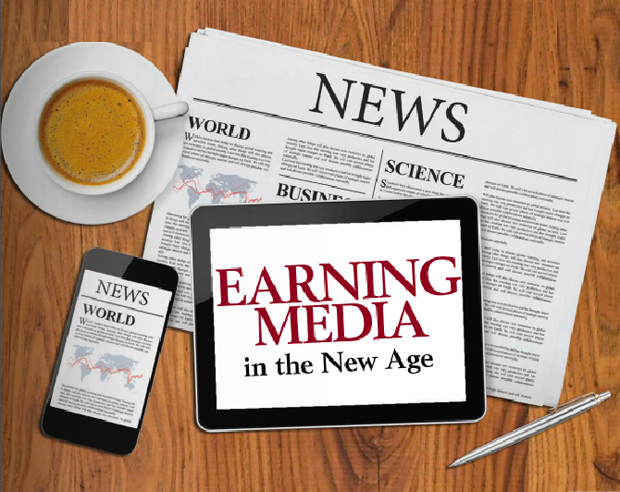Earning Media for Associations in the New Age

Is the press release dead? Why is it so hard to get into my local newspaper these days? Why won’t the media show up to my news conference? These are questions I hear often and the answers (see the end of this article) are varied. However, there’s another question I invite you to consider: How can I win in this new media landscape?
As a professional who has sought media coverage for many types of associations for more than a decade, I’ve had a front row seat to what works when it comes to media relations, both yesterday and today. In that work, I’ve learned that some things have endured through the changing media landscape, many things should evolve and opportunities abound to expand efforts to capture your association’s share of earned media in the new age.
Enduring: Just Because It’s “News” Doesn’t Make It Newsworthy

One of the most common mistakes I see associations make (and organizations at large, for that matter) is that because something is news to them, it should be news to others. In reality, that is rarely the case. Most “news” is only meaningful to those who originated it and rarely has relevance to the audiences of the news outlets you hope will cover it. But don’t lose heart… there is probably a lot more that is newsworthy inside of your association than you realize.
By nature of being an association, you bring a unique point of view to your industry. Whereas any individual person or company can only speak from their own (sometimes biased) perspective, you see 360 degrees, from the smallest to the largest and from the most rudimentary to the most sophisticated. That makes you valuable to media, who want to validate, refute or understand trends in your arena. So, how can you take better advantage of that position and raise your voice?
Start by looking around to discover what information you have that no one else does. Could you track employment trends among your members and issue a report on “The State of Employment”? Do you know what type of compensation your members earn, what levels of confidence they have in the economy or how many mergers & acquisitions occurred in your field last year? Those are all stories that would interest media and it’s possible your members might value those insights as well, making it a win/win for member value and public perception.
Another asset unique to associations is that you can assert a point of view about your industry that becomes newsworthy, merely because you are an association. For example, recently the American Marketing Association created its first Intellectual Agenda, in which it defined “The Seven Big Problems in the Marketing Industry”. Anyone in the field of marketing could say what they think the industry’s problems are, and media wouldn’t care, but it carries more weight when the industry association says it. In addition, the contrarian way this information is presented adds to its appeal, forgoing the gentler “seven big opportunities,” that was probably suggested, in favor of something intended to be provocative and create a sense of urgency. Media loves provocative. They love urgent. And they love it when an organization is willing to make a real statement. Is there a subject where your organization could be the one to step out and make its mark? Start asking those questions and take advantage.
Evolving: Think Beyond “Media”
In my work with associations, increasingly the media we care about are no longer “media” at all. That’s because associations often find themselves talking about topics mainstream media would consider obscure and irrelevant—but that’s exactly where the association needs to be. Why? Because it’s at the heart of what association members do. So how do you bridge that divide? You find the influencers who care about your topic as much as you do, and you stop believing that if it’s not in print, it’s not important.
We call these individuals “online influencers” and they write for online publications, have their own blogs and attract a strong following on social media of those who share your very specific interest or cause. This is often a new world for association executives and leaders, because they’re accustomed to a clear line between “the media” and “members.” Yet among online influencers, you might find those can be one in the same. As a result, today some of your most influential members may not be those at the podium or board table, they may be the ones typing furiously in the back of the room, updating their blogs or posting to Facebook during your Member Town Hall.
This can be a double-edged sword for associations. On the positive side, broadening your thinking of “media” means you have many other places to share your story and more audiences to communicate with. However, engaging in this realm effectively sometimes requires a different approach. For example, there are many association gatherings where media may not normally be permitted, but members are. So if you have an online influencer among your membership, you should prepare appropriately. In addition, it’s important to train the spokespersons of your organization to interact with online influencers in much the same way they would interact with traditional media. This includes only sharing information that is appropriate for public consumption, and most importantly, treating online influencers with as much care, consideration and respect as traditional media. One of the fastest ways to earn an enemy who has a large microphone is to make that person feel like they’re not a priority, so don’t let your spokespersons make that mistake.
Expanding: More Voices = Better Coverage
When telling your association’s story, it’s time to get creative about who, how and when to engage spokespersons on your organization’s behalf. The traditional method of restricting spokesperson responsibilities to just your chairman or CEO is unlikely to provide the speed, flexibility and range that your organization needs to compete for attention in today fast-paced landscape.
When it comes to speed, gone are the days of PR representatives asking reporters, “What’s your deadline?” We rarely ask that now because the answer is always, “as soon as possible.” That’s because today, a story can be published at any moment and every reporter is trying to beat the others to it. So, they publish as soon as they feel they’re ready, which could be 30 minutes after they call you for an interview. That means that if your communications team has to circulate an interview request to three people before they decide whether to accept it, and then track down your chairman to schedule it, you’ll miss almost every media opportunity. That means you need a spokesperson strategy that provides more speed, relying on leaders and members when it’s possible, but also blending with more readily available staff members who are authorized and trained to speak publicly.
You also need more flexibility and range. By selecting one or two people to be your spokespersons, you’re selecting a very narrow field of experience and expertise, even when those individuals are excellent professionals and great speakers (which isn’t always the case; I know many good leaders who are terrible speakers). Rather, an association should strive to provide a broad and deep perspective throughout its industry and that is best delivered by a broad and deep collection of voices. True, engaging more spokespersons could make your message less consistent, but that risk can be managed with good media training and support from communications, and I believe it’s worth the tradeoff for the richness and substance you’ll discover from a deeper bench of speakers.
“But I’ll Never Get My Leaders to Sign Off on This!”
I realize following these suggestions requires a lot more than communication skills. Implementing many of them will require vision, leadership and above all, political savvy, so I don’t pretend it will be easy. I do believe, however, that it can be worth it and offer a few tips for overcoming some of the challenges I’ve seen my clients face on the path toward this approach.
“We can’t say something controversial. Some of our members won’t like it.”
Yes, that’s true, but the more important truth is that more of your members will. They really will. As in, all of those questions they ask about whether their association membership is really worth the money they pay could become less frequent if a majority of your members feel you’re out there advocating for important points of view, instead of always sitting on the sidelines and letting members battle it out. And if you have a sound process that entails appropriate member input to decide what those statements will be, as well as a prompt, meaningful, sincere response to members who don’t agree, you’ll come out ahead.
“Do I need to start barring online influencers from my members-only gatherings?”
No! That is one of the worst things you can do and will almost certainly turn a potential friend into a firm enemy. Rather, embrace the new reality that anyone with a smart phone could be a reporter, which means we stop pretending we “control” messages and we behave as if every internal communication could become external, since it so easily can. Thus, when you need to discuss sensitive subjects with your members, simply remind those in the room of their ethical obligations related to confidentiality. Then, if members act outside those expectations, use your organization’s governance tools to address it.
“How can I keep all those spokespersons informed and on message?” By doing three things: 1) defining a solid rationale for who speaks when, and why, so you always know who to call (and others can understand why they didn’t get the call); 2) quality media training that is repeated frequently enough to keep spokespersons fresh and confident; and 3) effective organizational messaging combined with quality interview preparation. If that sounds like a lot of work, that’s because it is, but I find it’s time well-invested if you’re serious about expanding your presence in the media.
This new age for earned media is not for the faint of heart, but it is filled with opportunity for associations ready to embrace it. More than ever, our industries need the depth and context that associations can provide, so pick up that microphone … or smartphone … and get in there!
This article original ran in the Texas Society of Association Executives’ Association Leadership Magazine. Read past issues at www.tsae.org.


